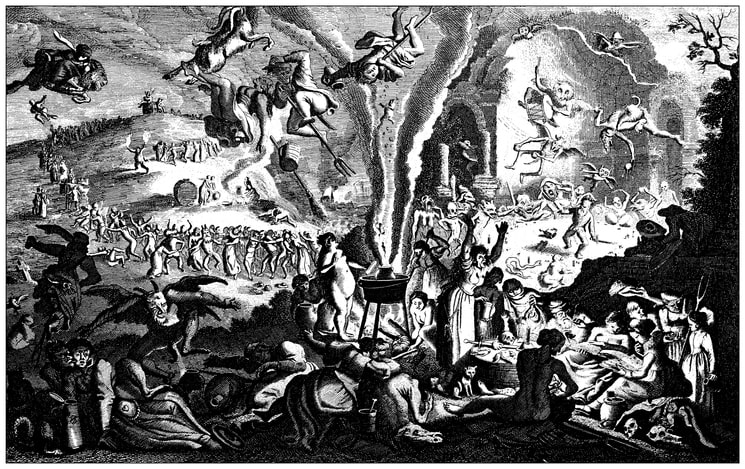History of Witchcraft
Origins of Witchcraft
Symbols of witches can be found all the way back in ancient times. It was not until medieval times in Europe where witches began to be associated with the devil. As Christianity in Europe grew, witchcraft practices began to become more socially unacceptable. In other cultures such as China, Rome, Egypt, Greece, witches were seen as wise because they could talk to different deities. These witches were thought to be able to heal and protect those who were on their good side.
Witch hunts and trials
The Protestant Reformation had a big effect on the way witches were viewed. During the movement witches became more feared as religious tensions heightened. During the Protestant Reformation witches were thought to harm others and make deals with the devil. Due to some statements in the old testament bible, and the beliefs of many Christians, witches began to be hunted and killed. Eventually, witchcraft in Europe was considered a crime. Witchcraft trials were held all around Europe for many decades after the Protestant Reformation, and those accused often faced severe consequences. The most popular witch hunts were held in Salem Massachusetts. Over 200 people, mostly women, were accused of practicing witchcraft. Trials were held and 20 people were murdered while others were either exiled or sentenced to imprisonment. Most of those accused did not even practice witchcraft. These trails show how throughout centuries witchcraft has been feared and had a huge cultural impact on societies around the world.

Image source: Getty Images
Influence of witchcraft
During the Renaissance period witchcraft views began to shift. During the Renaissance many common values and views were questioned, this included the ideas that surrounded witchcraft. After the Renaissance, witchcraft began to have a bigger impact on literature and art. While witchcraft was negatively viewed in most of Europe, countries like Africa and Scotland used witchcraft in many of their beliefs and practices.
Wicca
Today the most common practice of witchcraft is through the religion Wicca. Wiccans believe in accessing divine energy and worshiping different gods or goddesses. Wiccans celebrate 8 different festivals throughout the year known as Sabbats During these Sabbats Wiccans may gather for festivals or rituals to celebrate. These eight holidays follow a special calendar called the Wheel of the Year. The Sabbats are made up of 2 solstices, 2 equinoxes, and 4 cross-quarter holidays known as Imbolc, Beltane, Lammas, and Samhain. These 4 festivals are heavily inspired by early witchcraft traditions in Europe.

Wheel of the Year
Image source :freepik
Symbolism of witchcraft
Witchcraft is a very personable practice that can differ from each individual. Overall, the craft relies on a connection with nature and spiritually. Many of the items used to practice witchcraft are symbolic of something. The most common witchcraft symbol is the pentagram. The pentagram looks like a star enclosed in a circle. The top point is representative of spirit, the middle two represents air and water, and the bottom points represents earth and fire. The highest point represents spirit or divine to show that gods and goddesses have creature influence over the physical world which is made up of the other elements. Each of the elements shown in the pentagram is symbolic of a deeper meaning. For example, the element Earth is thought to symbol stability. The pentagram is a great example of how many layers the practice of witchcraft can have.

Source Image:Medium

Comments
Post a Comment